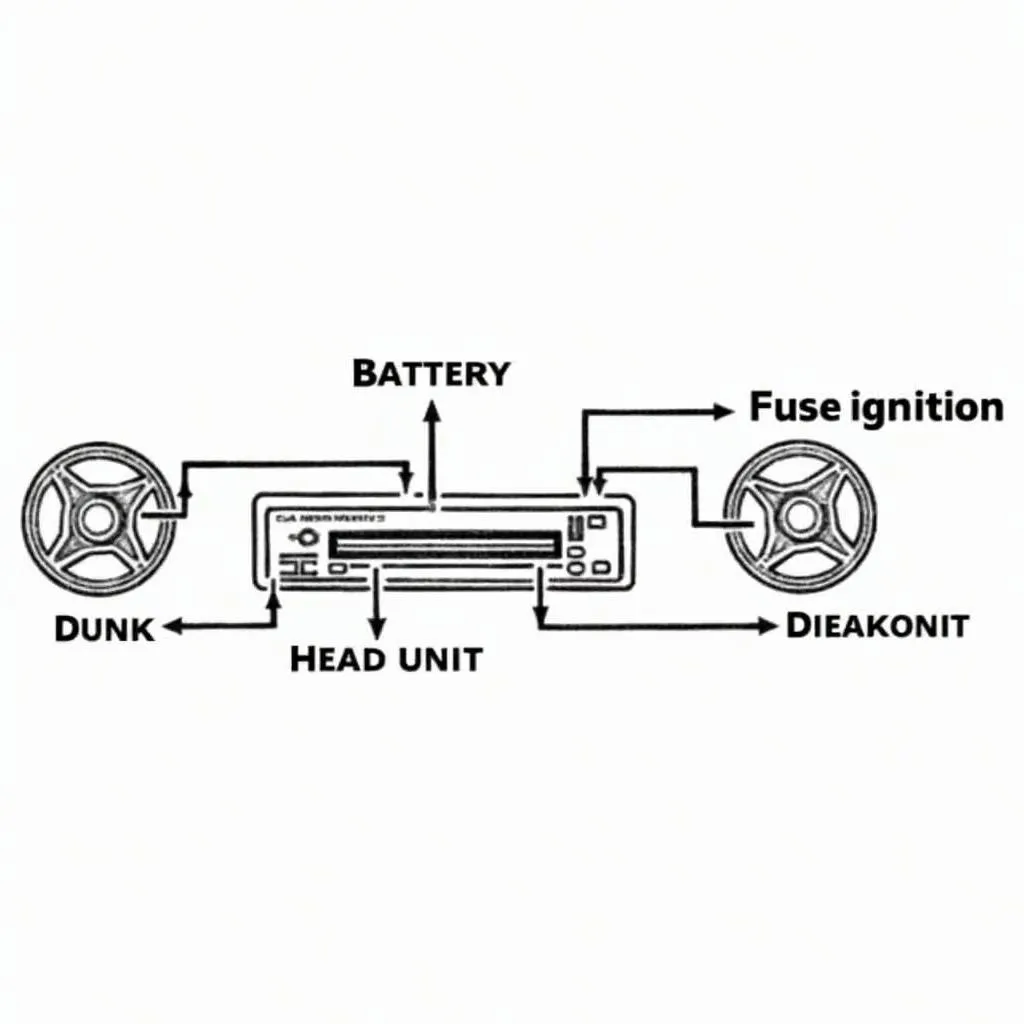A battery current draw test is crucial for diagnosing parasitic battery drain, a common issue that can leave you stranded. This guide will walk you through the process, from understanding the basics to advanced troubleshooting techniques, helping you pinpoint and fix those pesky electrical gremlins draining your car’s battery. Let’s dive in and get your car back on the road!
Understanding the Battery Current Draw Test
The battery current draw test, often referred to as a parasitic draw test, is a diagnostic procedure used to identify excessive current consumption when the vehicle’s ignition is off. A healthy vehicle will have a minimal current draw to maintain essential systems like the clock, radio memory, and security system. However, a faulty component, such as a stuck relay, faulty interior light, or even a corroded wire, can cause an abnormally high current draw, leading to a dead battery. Identifying this “parasitic draw” is the key to solving your battery woes. This test involves using a multimeter to measure the current flowing out of the battery when the car is seemingly “off”.
If you’re experiencing a dead battery, particularly overnight, a new battery drained overnight is a strong indicator of a potential parasitic draw problem.
Performing the Battery Current Draw Test: A Step-by-Step Guide
- Gather your tools: You’ll need a digital multimeter with a DC ampere (A) setting, preferably one with a min/max function.
- Prepare your vehicle: Turn off all lights, accessories, and the ignition. Close all doors and ensure the vehicle is in a quiescent state – meaning all modules have gone to sleep (this usually takes around 30-45 minutes).
- Disconnect the negative battery cable: Carefully remove the negative cable from the battery terminal.
- Connect the multimeter: Set your multimeter to the DC ampere setting. Connect the red lead of the multimeter to the negative battery cable and the black lead to the negative battery terminal. This puts the multimeter in series with the circuit, allowing it to measure the current flow.
- Observe the reading: Note the initial current draw. A healthy vehicle will typically have a draw of less than 50 milliamps (0.05 amps). A significantly higher reading suggests a parasitic draw.
If your battery is constantly dying, especially in a car like a Chrysler 300C, checking for a chrysler 300c battery drain is a must.
Isolating the Culprit: Advanced Troubleshooting Techniques
Once you’ve confirmed a parasitic draw, the next step is to isolate the faulty component. This involves systematically removing fuses one at a time while observing the multimeter reading. A drop in the current draw after removing a specific fuse indicates the circuit protected by that fuse is the source of the drain.
“A common mistake people make is not waiting for the vehicle’s modules to sleep before taking the initial reading. This can lead to inaccurate results and misdiagnosis,” says John Smith, Senior Automotive Electrical Engineer.
If your Camaro is suffering from battery drain issues, a focused guide on the camaro battery drain problem could provide specific solutions.
Conclusion
The battery current draw test is an invaluable tool for diagnosing and fixing battery drain issues. By following the steps outlined in this guide, you can take control of your car’s electrical system and avoid the frustration of a dead battery. Don’t let a parasitic draw leave you stranded – perform a battery current draw test today!
A dead battery can leave you with a non-starting car. Check out our guide on dead battery starter for further assistance. For a comprehensive overview of why your car battery might be dying, explore our article on battery going dead in car.
FAQ
- What is a normal battery current draw? A normal draw is typically less than 50 milliamps (0.05 amps).
- What tools do I need for a battery current draw test? You’ll need a digital multimeter with a DC ampere setting.
- How long should I wait before taking the initial reading? Wait at least 30-45 minutes for all modules to go to sleep.
- What does a drop in current draw after removing a fuse mean? It means the circuit protected by that fuse is the source of the parasitic draw.
- What are common causes of parasitic draw? Common causes include faulty interior lights, stuck relays, and corroded wires.
- Can I perform this test myself? Yes, with basic automotive knowledge and the right tools, you can perform this test.
- What should I do if I can’t identify the source of the draw? If you’re unable to pinpoint the problem, consult a qualified automotive electrician for further diagnosis.

